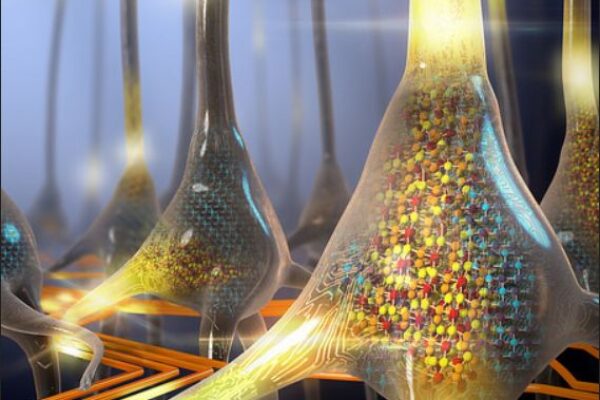
IBM researchers emulate neurons with phase-change materials
Here the artificial neurons consist of phase-change materials, including germanium antimony telluride, which exhibit two stable states, an amorphous one and a crystalline one. In the published demonstration, the team applied a series of electrical pulses to the artificial neurons (corresponding to streams of data), which resulted in the progressive crystallization of the phase-change material, ultimately causing the neuron to fire.
In neuroscience, this function is known as the integrate-and-fire property of biological neurons (when a cumulated stimulus threshold is met). This is the foundation for event-based computation. Therefore, the artificial neurons are not used to store data as a given state, but instead are used for their analogue behaviour, just like the synapses and neurons operate in the brain.
By exploiting this integrate-and-fire property, even a single neuron can be used to detect patterns and discover correlations in real-time streams of event-based data. In a paper published in Nature Nanotechnology, the researchers describe how they organized hundreds of artificial nano-scale neurons into populations and used them to represent fast and complex signals. In a video, they demonstrate how feeding pixel data from random images to thousands of synapses connected to only two level-tuned neurons, they were able to detect recurring patterns (two distinctive logos) out of the average noise.
They also claim these nano-sized neurons can sustain billions of switching cycles, which would correspond to multiple years of operation at an update frequency of 100Hz. The energy required for each neuron update was less than five pico-joule and the average power less than 120 microwatts.
Densely packed arrays of such neurons could be used to analyse high volumes of sensor data, searching for data correlation or to detect patterns in neuromorphic coprocessors, with co-located memory and processing units.

Related article:
IBM demonstrates 3-bits per cell phase-change memory
 If you enjoyed this article, you will like the following ones: don't miss them by subscribing to :
eeNews on Google News
If you enjoyed this article, you will like the following ones: don't miss them by subscribing to :
eeNews on Google News




